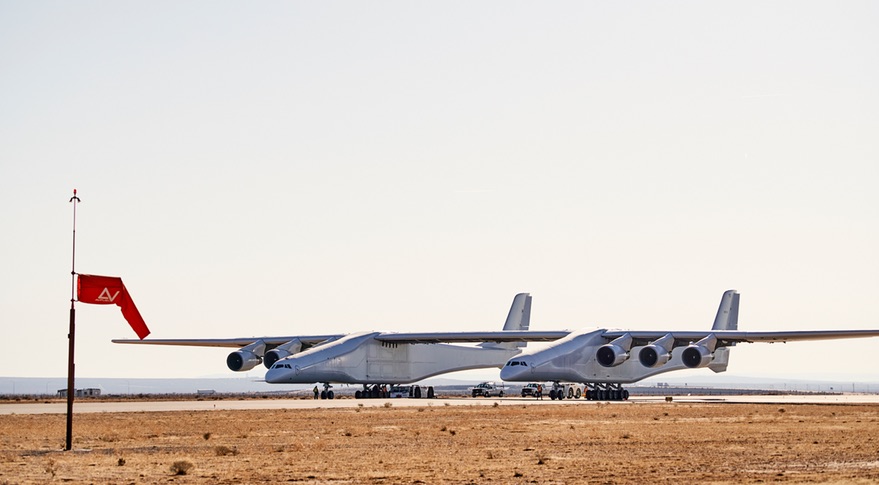It’s always been a tradition in Aviation technology to push the limits. Building Aircraft much larger and more powerful in every way! Stratolaunch Systems has designed an aircraft with the Dual fuselage and almost of a size of a 4-storeyed building. This gigantic plane took its first taxi-test a weeks ago. Learn more about it in this article.
About Stratolaunch Systems
Stratolaunch Systems was founded by Paul G. Allen in 2011 to get some game-changing ideas into reality to make space launch affordable, reliable and accessible to small space-related ventures. Paul Allen is an investor, billionaire, and co-founder of Microsoft along with Bill Gates. Stratolaunch Systems aimed at opening doors to innovations in space technologies which previously didn’t get a push because of costly launch facilities of NASA.
The company is headquartered at Seattle, Washington and operates aircraft development facilities at Mojave Air and Space Port, Mojave California. Mojave Air & Space Port nurtures all the Space-tech companies providing flight test and development facilities.
About Largest Plane
Currently unnamed, Stratolaunch Plane is the largest plane in the world with its wingspan 117 feet, more than a length of a football field. This Twin fuselage aircraft has a length of 238 feet. It is powered by Boeing 747’s six Pratt & Whitney PW4056 Engines used for, three on either side. Such powerful engines allowed total payload capacity of 226,796 kg.
The unique high-wind design will allow release from center-line and below the wing, providing safer deployment. The all-composite structure maximizes its range and lift-capacity.
Stratolaunch systems developed this plane to avoid current delays in satellite launches by NASA allowing an ever-ready aircraft. Within 20 minutes, the plane reaches its altitude of 35,000 ft, it cruises to launch area and loiters, and after some time launch vehicles are released, allowing for rapid constellation deployment to various inclinations. As the launch vehicles ascend into orbit, the plane heads back to the runway, ready to reload for its next mission.
It takes off and lands just like another spacecraft. Stratolaunch systems have shown readiness to operate 12 or more missions every year.
Future Plans
The aircraft is currently in testing phases and plans its first take-off in 2019 and get into service from 2020. Stratolaunch Systems also announced the new launch vehicles it wishes to induct in future.
- Pegasus: Pegasus has a track record of over 35 successful launches, and provides reliable access to orbit. With the capacity of 370 kg payload for a single or triple configuration. Pegasus has under integration and testing currently with first flight in 2020.
- Medium Launch Vehicle (MLV): This medium-class air-launch vehicle optimized for short satellite integration with the affordable launch and flexible profiles. With payload carrying capability of 3,400 kg, MLV us in development with first flight scheduled for 2022.
- Medium Launch Vehicle – Heavy: MLV-H will be a three-core MLV variant which will possess the capability to deploy heavier satellites into orbit with a capacity of 6,000 kg payload. MLV-H is currently under development.
- Space Plane: Space Plane is a fully reusable spacecraft which will enable high-tech orbit capabilities and cargo return. Initial designs have optimized it for cargo launch, and design study is currently on for a variant capable of transporting crew. It’ll be capable of carrying medium-class payloads.
With Stratolaunch proving its capabilities in Space technologies, many companies like SpaceX, Sierra Nevada Corporation, Lockheed Martin Space Systems have entered into a race of developing launch vehicles that are affordable, safe, and reusable. Increasing interest in space research and search for extra-terrestrial life has led to breakthroughs in the area of technologies further pushing the limits and creating new milestones.




